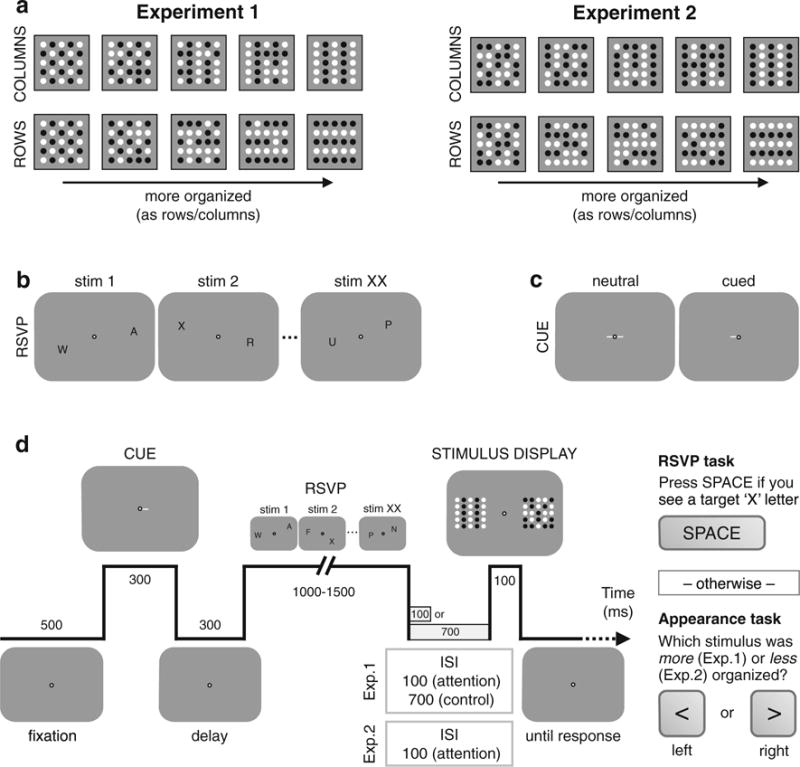Fig. 1.

Experimental procedure. a Perceptual organization stimuli were organized by luminance similarity into columns or rows. The organization level could go from being disorganized in terms of row/column (Experiment 1: checkerboard; Experiment 2: random organization) to a fully organized stimulus. b RSVP sequences were made of a series of letters presented randomly at one of 25 possible locations (5 × 5 grid). c Attention cues were central cues indicating with 100% validity either one (cued) or both (neutral) RSVP streams to attend to. d Trial sequence began with a fixation period followed by a central cue. Then, RSVP letter streams were presented on both sides of fixation, and participants had to detect a target letter X. If they did not report the presence of a RSVP target, they had to report which of two subsequent stimuli was more organized. The RSVP sequence and the onset of the perceptually organized stimulus display were separated by either a short (100 ms; Experiments 1 and 2) or a long (700 ms; Experiment 1) ISI. Trial sequence was contingent on fixation using online eye tracking
